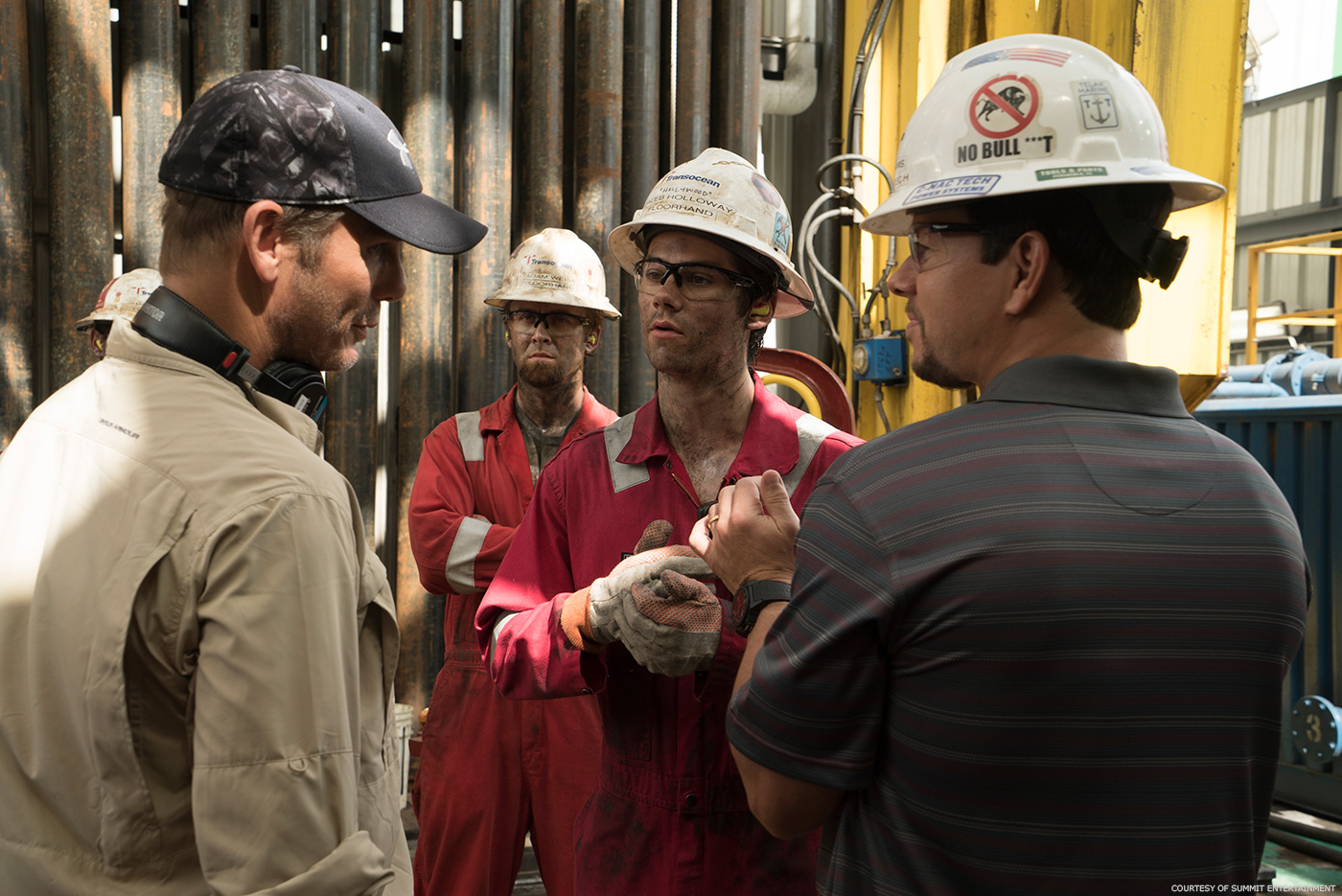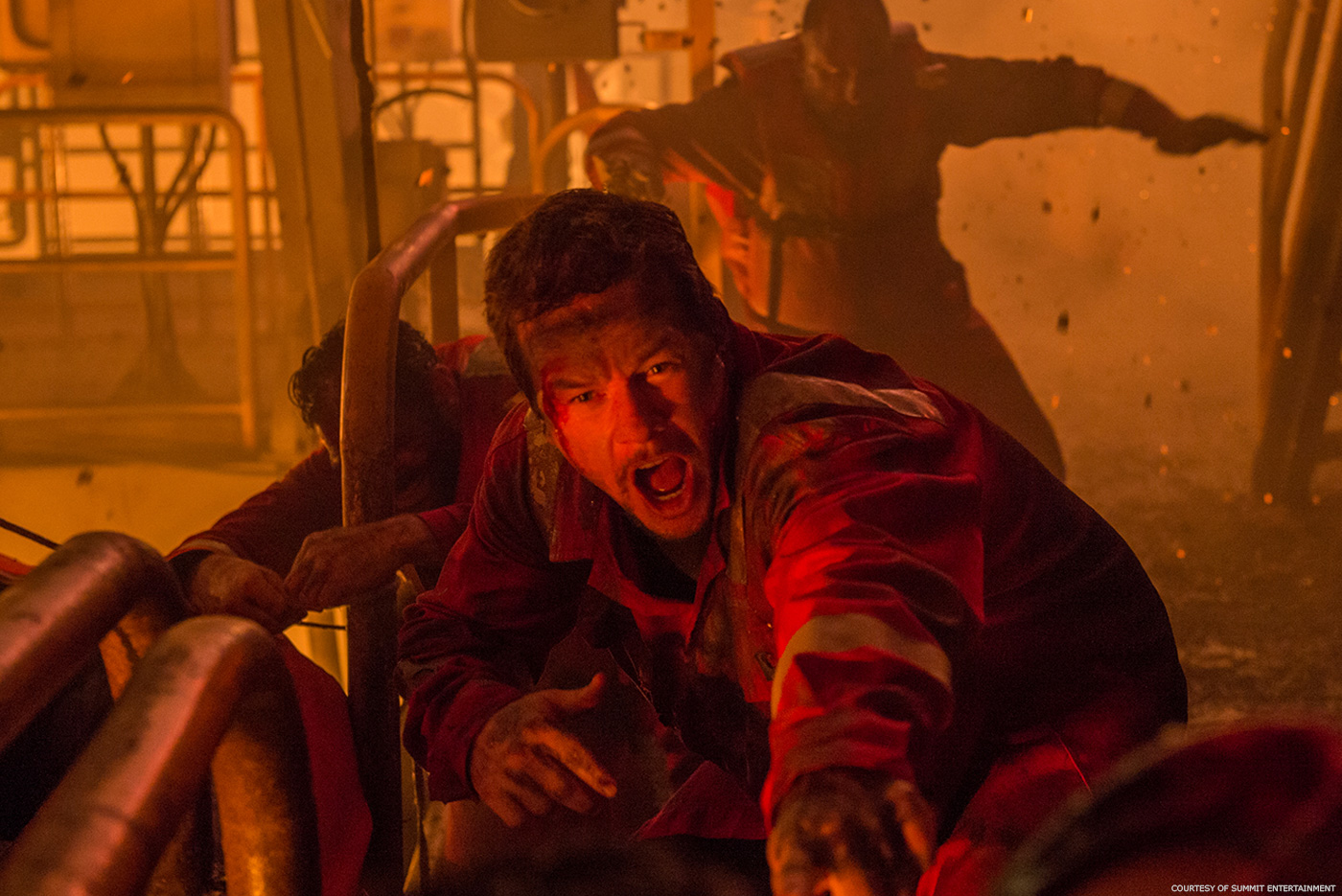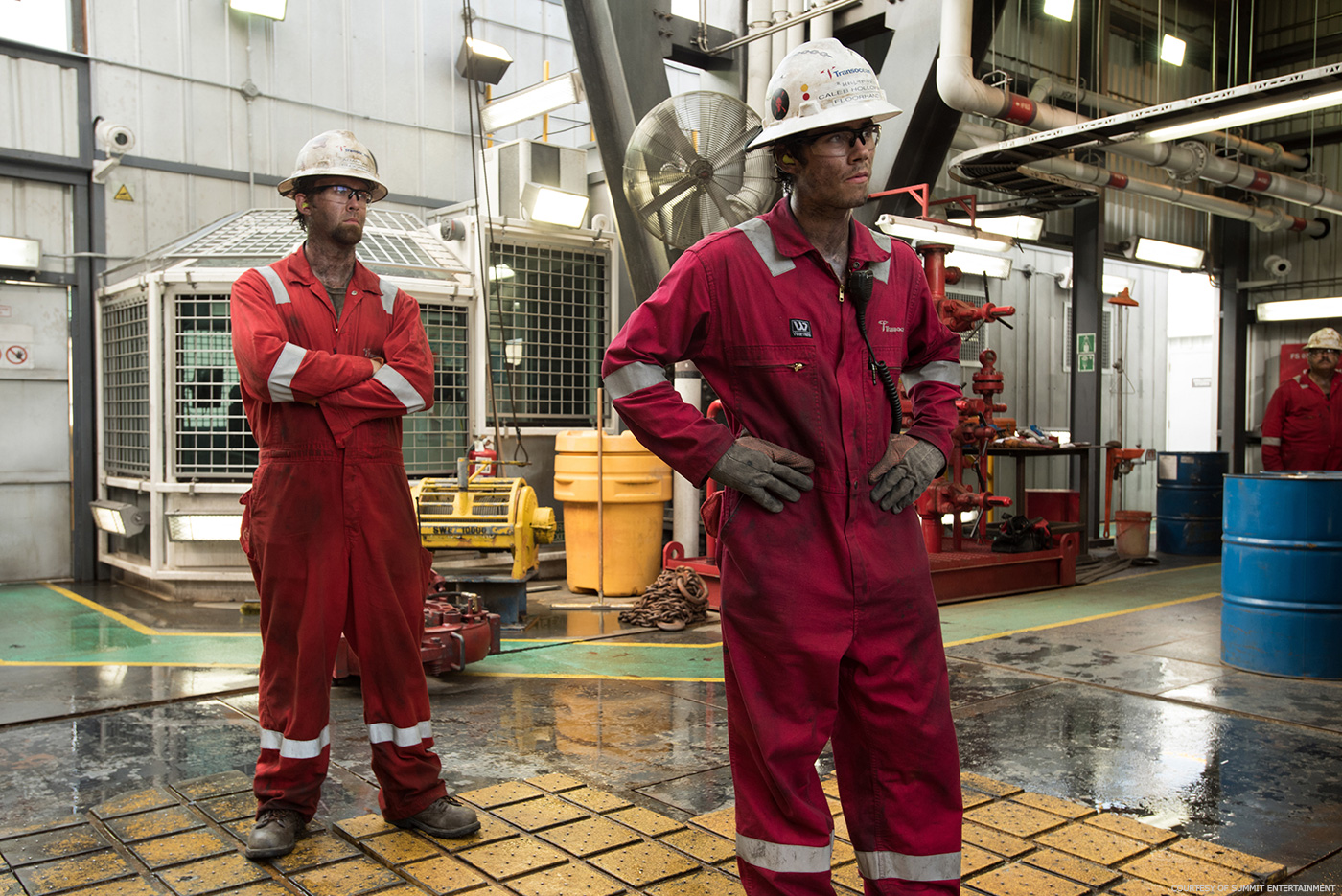In 2015, Craig Hammack told us about the work of Industrial Light & Magic on TOMORROWLAND. After BATTLESHIP, DEEPWATER HORIZON marks his second collaboration with director Peter Berg.
How did you and ILM get involved on this show?
ILM has a bit of history with Peter Berg (Director) and Petra Holtorf-Stratton (Visual Effects Producer) from collaborating on BATTLESHIP and LONE SURVIVOR. When they became involved in the project I think they realized Visual Effects would play a large role. They were after someone they could be confident would be able to roll with the punches and deliver solid results… so contacted us.
How was the collaboration with director Peter Berg?
Exhausting. Pete is an intense guy, and this was an incredibly intense story that needed to be told well. Pete likes to surround himself with people he knows he can trust and who understand what’s important to him. I was a new face and in a position that would require him to trust me for a very long time before I could prove I would deliver. Visual effects is funny like that, you have to spend so many days promising greatness and asking people for patience and faith. On a project like this that’s a big ask, but Pete has the experience with the process and with ILM to understand.

What was his approach and expectations about the visual effects?
Pete wanted everything to feel real… period. He knows from past experience what that means in a movie like this. He pushed everything as far as it could go in camera. The sets were as big and authentic as they could be, the special effects were as big and complex as they could be while maintaining safety for all involved but in the end, it’s real actors portraying an insanely dangerous situation so a lot has to be done in post.
What he was after from the visual effects was to absolutely plunge the audience into the chaos of the situation, to provide a visceral experience of just the kind of hell these people had to fight through to in their attempts to try to overt the disaster that would ultimately unfold and save the lives of everyone they could. He kept telling me that he knew ILM could do beautiful work, but that’s not what he wanted. He wanted it to be “dirty and nasty.” Everything from exposures to framing to lens artifacts – He wanted the audiences to be able to feel the heat and taste the smoke.
How did you organize the work at ILM?
ILM is a global company these days so we take advantage of that as much as possible to spread work to the talent and be as efficient as possible while doing it. The work was spearheaded from our San Francisco studio, and an amazing amount of extremely complex work was contributed our teams in Vancouver and London.
Can you describe one of your typical day during shooting and post?
Well as you might imagine on this movie the shooting was split between daytime walk and talk shots, and nighttime disaster shots. We shot an amazing number of nights on this film. To give you an idea of a typical night on the rig set… I would arrive on set about an hour before sundown, grab a quick meal and try to find Will and Joe, two other members of the VFX team on set. Then I’d make sure I had all the gear I’d need for the night and make the long climb up the stairs to the platform, some 60-feet in the air. Once there I’d walk around the rig and check in with each of the other departments to make sure there were no curveballs to deal with and that we were all on the same page in terms of what the evening’s shot list looked like. After that, we’d have a safety meeting and then get to it.
Pete shoots quickly and the fact that there was a lot of handheld camera work meant that other than waiting for special effects setups and safety checks, we could move quickly too. When you are 60-feet in the air in a location that is known for storms and strong winds, your options for things like erecting green screens become very limited. I knew that the film wanted to be a dirty organic thing and the worst thing you can do is to try to impose a lot of rules to make it easy or clean for work in post. My role was to make sure nothing that would be disastrous for visual effects occurred and then just stick close to whichever department was playing the biggest role in the shot. By doing that I could suggest slight modifications here and there to make things easier or less expensive, but not hinder the natural inclination of the other departments. Some days we would shoot until dawn and then either call it a day or head to another set to discuss future work.
Can you explain in detail about the creation of the Deepwater Horizon itself?
Getting the rig right was a concern for everyone. The problem was that there was surprisingly little documentation about the rig that we could get our hands on. Chris Seagers, the Production Designer, and his team of research assistants and art directors did an amazing job of taking what was available and mapping out a plan. The Deepwater Horizon did have a sister rig built that matched it pretty closely. Initially, we were hopeful that we might be able to make our way onto it to scan and shoot texture photography of it, but this was perceived by some in the oil industry as a controversial story so we were not able to utilize it – even for aerial work.
So with the documentation from the art department, and a very good blocking model as a starting point the team at ILM set out meticulously building and painting. It was unclear which areas of the rig we would need, so the entire thing was built. As a complete CG asset, it was generally to heavy to deal with as a whole though so we built in sections that would be put into what we call a ‘nested asset’ within our software. Utilizing this technology, we were able to easily control what level of detail was loaded for any section of the model.
With the Deepwater we also knew that there would need to be stages of destruction so different levels of very detailed scorch and mud maps were painted. Pete knew that without a real rig to shoot on we would need to rely on a great CG model for extensions as well as fully virtual geography shots. He wanted to be able to drop a camera anywhere on the rig and have it hold up to intense scrutiny.
Which part of this huge platform was the most complicated to create and why?
I would say the Derrick was the most complicated. It was featured quite heavily and had to do the most. It has to appear clean, covered in mud, on fire, melted and finally we see it collapse… all states seen in the film from extreme close ups to far distant shots. That and it’s basically full of flat surfaces with some dressing around it. Simple flat structures seen in those situations are often the hardest to make look real and non-computer generated.
The production have build a part of it on full scale. How did you blend your model on it?
The production designer created physical sets that were actually built at 85% scale. There were 3 main sets in different locations. A set for the drill floor area, another set for the main deck and a third set for lifeboat deck and helipad (with a massive water tank beneath it). Due to the nature of the work there were very few situations where we could use multiple sets in a shot, so it all became extensions. Luckily we knew this going in and were able to plan for it. We had the ILM laser scanner with us and were able meticulously scan the sets during production. This along with the fact that the art department built out the blocking model to closely match the layout of the sets meant that we had a solid representation to use to build from, and to track with. The other extremely valuable thing we were able to get from the production design team was a detailed book that documented every paint and material used in the construction. This all gave us a great foundation to build on.
There are many underwater shots. Can you tell us more about their creation?
All the underwater work, except for the part of Mark after he jumps off the rig, is entirely CG. The majority of the underwater work was done at our London facility and led by VFX Supervisor, Mohen Leo and John Galloway. These shots were critical to the story, one part is meant to introduce the idea of the BOP (Blow Out Preventer), a piece of machinery that is specifically supposed to prevent blowouts from happening or getting out of control if they do happen. This is where the problems start in the narrative so having shots that explain a bit of that and give a visual tension to the lead up was key. The only way tension works is if the visuals are believable. In reality there’s a lot going on at the bottom of the ocean. Luckily there’s some pretty great reference we found to help us replicate it. Each of our CG shots required many, many layers of micro bubbles and silt and floating seaweed and current simulations to drive subtle distortions in the image. There is science that can help you determine accurate levels of diffusion and color falloff, but often those get creatively tweaked for the sake of readability and story telling. Once the problems start in the story then we simulated mini pressure eruptions on the sea floor. This again meant simulations in ground, dirt, silt, bubbles and micro bubbles.
The movie is full of FX simulations. What was your approach about these simulations?
The good thing about a rig in the middle of the Gulf is that it’s a limited and fixed area that you are dealing with. I basically took a poster-size printout of a photo of the Deepwater Horizon and marked on it with a sharpie where the fire sources would be. We then were able to take that map and into Houdini and generate source particles that would feed into Plume, our proprietary GPU-based simulation and rendering engine. Since, in the digital world, the rig never moved once we had one section of fire looking good it could be checked in into our pipeline for all of our crew on the show to use if they saw that particular part of the rig in their shots. There were always tweaks in the shots, but the system worked amazingly well.
How did you used your in-house software such as Plume and Fracture?
Well Plume was relied on heavily. Plume is still our go-to software for anything fire related. On this film I think we pushed it to the absolute limit. Luckily, it’s very stable and fast which allowed us to hammer away at the immerse number of fire shots day and night. The biggest advancement we made from previous version was to get an enhanced scatter model implemented. The other great thing about Plume is that were able to constantly pump out low res versions of the simulations that could then be fed to the lighting TDs to use for interactive lighting.
Did you used any miniatures on this show?
No physical models on this one but in a way the whole set was a miniature – just a really big one.
How did you handle the massive and various destructions that happens on Deepwater Horizon?
I think in a situation like this one it is easy to massively overthink what is necessary. We were after chaos, but in the context of the rig that chaos wanted to be contained to mud/fire/debris…. with some main large event shots thrown in. We knew that, for the most part, the cuts would be quick and that much of the destruction and explosions were there to be intercut with other parts of the story. If you realize that an explosion is just there to have an explosion, then you don’t have to spend a ton of energy coming up with a whole backstory for what caused it or worry about showing the damage after it.
Many stunts happens during the show. How did you work with the stunt team?
The stunt team was incredible. They had a tremendous amount of pressure on them. The majority of that work was just cleanup for VFX though. They had to work very closely with special effects team than with us. The one stunt that did require quite a bit of collaboration on though was the final jump from the rig. This required layers of takes and elements from the tremendous wire work to actually make the jump with both a stuntman and a camera man, to the stunt water tank elements of the underwater and the water level shots in the rig tank. These all had to be stitched together in a way that kept you in this harrowing moment. Luckily the second unit director, Kevin Scott, was from a stunt background and was very easy to work with in the planning stage and he understood that it was a puzzle that would be assembled in post.
Can you tell us more about the shot in which we follow Mike Williams jumping off the platform?
This is one of those shots that starts as a fun challenge and then really take a long time to complete. It was visualized as a single shot, continuous experience with Mike. This intense vertigo moment that leads to an underwater nightmare. We shot the jump section with a stunt man on a descender wire rig. The camera man was also on a descender rig and jumped with the stunt man. It was done from the helipad 70 feet above a real water tank that was just 5 feet deep. Because it was so shallow, we could only let him penetrate the water a few feet. The vertigo part was very difficult because it’s night time over moving water. In order to get a true vertigo sensation as an audience member, you really need to clearly see and understand distance and perspective. With darkness and water you get neither so we attempted solve that problem by adding anchored debris and fire.
There were several passes for the jump portion of fire/debris then the deep underwater sections were shot at a test tank for submersible vehicles. It was 16 feet deep, which was just barely enough room to simulate the deeper water penetration. Then sections that are at the water line after they have come up were shot in the 5′ tank underneath the rig set. It was the single longest shot worked on in the movie and due to all of the reconstruction and stitching and compositing required, ran pretty much the entire length of post production.
The final jump from the rig was the one shot that kept me up nights. The shooting of it was a real concern. There was no real way to capture everything we were going to need in a single take so we had to make certain each piece was the best we could make it. In the end you know it’s just going to be a huge amount of work to get it done as seamlessly as possible. Once we got it back to ILM I knew the people we had on it would make it look great, but boy it really kept me up.
How long have you worked on this show?
I believe my first day was in April of 2015.
What is your next project?
I can’t say just yet, but it’s an exciting one!
A big thanks for your time.
// WANT TO KNOW MORE?
– Industrial Light & Magic: Dedicated page about DEEPWATER HORIZON on ILM website.
© Vincent Frei – The Art of VFX – 2016









